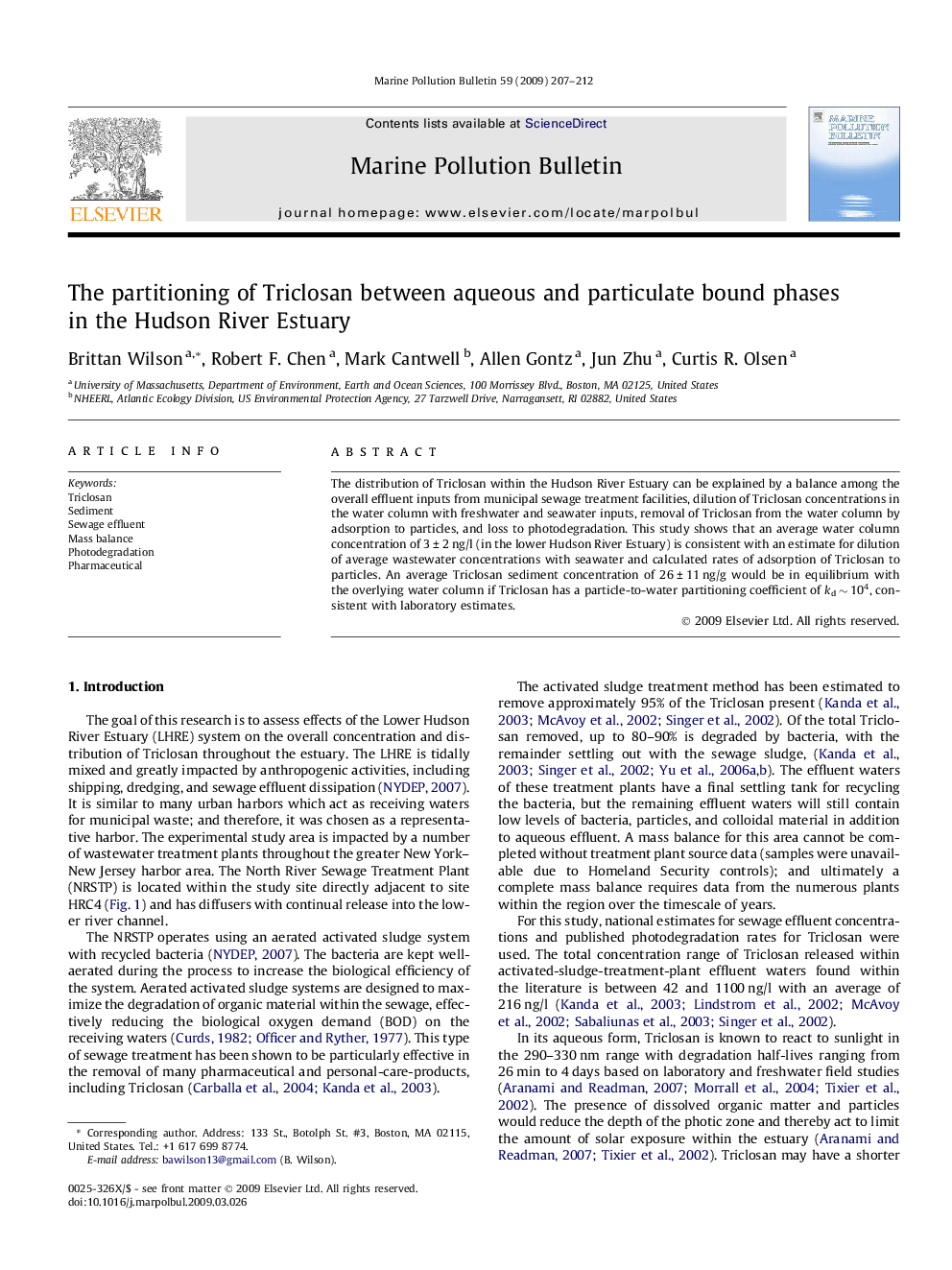| Article ID | Journal | Published Year | Pages | File Type |
|---|---|---|---|---|
| 4476852 | Marine Pollution Bulletin | 2009 | 6 Pages |
The distribution of Triclosan within the Hudson River Estuary can be explained by a balance among the overall effluent inputs from municipal sewage treatment facilities, dilution of Triclosan concentrations in the water column with freshwater and seawater inputs, removal of Triclosan from the water column by adsorption to particles, and loss to photodegradation. This study shows that an average water column concentration of 3 ± 2 ng/l (in the lower Hudson River Estuary) is consistent with an estimate for dilution of average wastewater concentrations with seawater and calculated rates of adsorption of Triclosan to particles. An average Triclosan sediment concentration of 26 ± 11 ng/g would be in equilibrium with the overlying water column if Triclosan has a particle-to-water partitioning coefficient of kd ∼ 104, consistent with laboratory estimates.
